Day 1 - Arrive Kolkata Arrive Kolkata international airport.Transfer to the hotel with assistance from the representative of the company. In the afternoon enjoy sightseeing tour escorted by our agent.Overnight at the hotel..
Days 2 to 4 - Kolkatta / Guwahati-Kaziranga National Park ( By flight )This morning you are transferred to Kolkata airport in time for your flight to Guwahati, the capital of Assam. You are received at Guwahati and transferred by road to Kaziranga National Park, arriving in time for that afternoon’s game activities.Your stay here would be full of adventure, jungle activities & elephants rides into the park offering you the best chances for close up viewing of the rhinos. Overnight at a jungle resort.
Day 5 - Kaziranga – Guwahati / Kolkata (By flight) Today you transfer back to Guwahati for your flight to Kolkata.
Overnight at the hotel in Kolkata.
Day 6 - Kolkata / Kathmandu ( By Flight) Today you will be transferred to the airport in time for your flight to Kathmandu. Transfer to hotel with assistance from the representatives of the company. Overnight at the hotel.
Days 7 to 9 - Chitwan National Park Early morning leave fro Chitwan national park. Upon arrival you will be transferred to a jungle lodge by their representative. Activities at the lodge include game drive, elephant back safaris, jungle walks, bird-watching and river safaris. Every evening a slide show explains more fully about the flora and fauna of the national park. All wildlife activities are escorted by experienced naturalists. Overnight at the lodge.
Day 10 - Kathmandu Today you return to Kathmandu. Overnight at the Hotel.
Day 11 - Kathmandu Today you have a full sight seeing programme at Kathmandu which is really two cities: a fabled capital of convivial pilgrims and carved rose-brick temples, and a frenetic sprawl of modern towers. Overnight at Hotel.
Day 12 - Kathmandu / Delhi ( By Flight) Transfer to airport to connect flight for Delhi. Arrive Delhi airport. Transfer to the hotel with assistance from the representatives of the company.Overnight at the hotel.
Days 13 to 16 - Delhi / Nagpur (by Flight) Nagpur / Kanha(266 kms/6.5 hrs drive) This morning you will be transferred to the airport in time to board your flight to Nagpur. Meeting on arrival at Nagpur airport and drive to Kanha. Game drives are organized by The Park both in the early mornings and late afternoons by open jeeps and will be accompanied by a forest department guide. He would take visitors around the park on mapped-out circuits which enable viewers to see a good cross-section of Kanha's wildlife. Overnight at a jungle resort.
Days 17 to 19 - Kanha / Bandhavgarh(189 kms/5 hrs drive) This morning drive to Bandhavgarh. Check in at the resort.
Later, visit the Bandhavgarh fort(2000 years old) situtated on the Bandhavgarh hill. There is a temple at the fort that can be visited by jeeps.There would be game drives in the sanctuary in morning & afternoon. Overnight at Resort
Day 20 - Bandhavgarh to Umaira (45 kms/1.5 Hr drive )Umaria / Delhi ( By Overnight Train – Kalinga Utkal Express) Breakfast & Lunch at the Lodge. Proceed on a game drive to the sanctuary. Evening, drive to umaria railway station to board Kalinga Utkal Express to Delhi. Overnight enroute on board the train.
Day 21 - Arrive Delhi You will be met on arrival in Delhi and transferred to the hotel where you can freshen up. Later in the evening you will be transferred to the international airport in time to board your flight to onward destination.
Trains : One
Flights : Two |
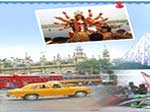 Kolkata It is the capital of the Indian state of West Bengal. It is located in eastern India on the east bank of the River Hooghly. A vibrant city with a distinct socio-political culture, Kolkata is noted for its revolutionary history, ranging from the Indian struggle for independence to the leftist and trade union movements. Kolkata It is the capital of the Indian state of West Bengal. It is located in eastern India on the east bank of the River Hooghly. A vibrant city with a distinct socio-political culture, Kolkata is noted for its revolutionary history, ranging from the Indian struggle for independence to the leftist and trade union movements.
Kaziranga Located on the banks of the mighty Brahmaputra River in the far North East of India, Assam,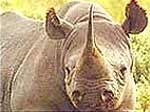
Kaziranga is a title of a remarkable success story of conservation of the One Horned India Rhinoceros and other wild lives. Kaziranga National Park covers an area of approximately 430-sq-kms with its swamps and tall thickets of elephant grass. Due to limitless poaching of this prehistoric survivor, the Kaziranga National Park was declared a wildlife sanctuary in 1940. It is one of the significant natural habitat for in situ conservation of biological biodiversity of universal value. The values and criteria made Kaziranga National Park to get inscribed in the World Heritage Site List 1985.
Kathmandu 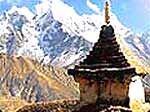 Kathmandu, the capital of Nepal is also its only international air gateway and major travel center.It is a fascinating old city today where pagodas, narrow cobbled lanes, old carved windows, and stone shrines are backdrops to the drama of life that continues unhindered. Here the experiences are amazing, views fascinating, and the climate charming. Here is a country agog with palace squares, towering temples, and with memories of wild dreams. There are cobbled stone streets that wind through ancient bazaars and lead to a sanctified place where a hundred priests on flying white horses once alighted. There are Buddhistst Stupas around which psychics and fourtune tellers abound. There are dawn and dusk places where witch doctors exorcize spirits and remedy all ills. Kathmandu, the capital of Nepal is also its only international air gateway and major travel center.It is a fascinating old city today where pagodas, narrow cobbled lanes, old carved windows, and stone shrines are backdrops to the drama of life that continues unhindered. Here the experiences are amazing, views fascinating, and the climate charming. Here is a country agog with palace squares, towering temples, and with memories of wild dreams. There are cobbled stone streets that wind through ancient bazaars and lead to a sanctified place where a hundred priests on flying white horses once alighted. There are Buddhistst Stupas around which psychics and fourtune tellers abound. There are dawn and dusk places where witch doctors exorcize spirits and remedy all ills.
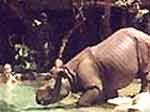 Chitwan Royal Chitwan National Park is located 166 Kms Southwest of Kathmandu.The national park is large area of low, heavily forested hills bordering India in the south, a heaven of wildlife including one horned rhino, leopard, varieties of deer, wild boar and around 400 species of birds. The park, formerly a royal hunting reserve covers nearly 400 square miles of dense forest and is home to nearly 60 Bengal Tigers. This is the natural habitat of endangered animals like one-horned rhinoceros and gharial crocodile. The park also secures populations of other endangered species such as wild elephant, four horned antelope, striped hyena, pangolin, Gangetic dolphin, monitor lizard, and python. Chitwan Royal Chitwan National Park is located 166 Kms Southwest of Kathmandu.The national park is large area of low, heavily forested hills bordering India in the south, a heaven of wildlife including one horned rhino, leopard, varieties of deer, wild boar and around 400 species of birds. The park, formerly a royal hunting reserve covers nearly 400 square miles of dense forest and is home to nearly 60 Bengal Tigers. This is the natural habitat of endangered animals like one-horned rhinoceros and gharial crocodile. The park also secures populations of other endangered species such as wild elephant, four horned antelope, striped hyena, pangolin, Gangetic dolphin, monitor lizard, and python.
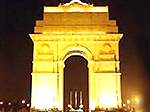 Delhi Delhi is a palimpsest, bearing the complexities, the contradictions, the beauty and the dynamism of a city where the past coexists with the present. Many dynasties ruled from here and the city is rich in the architecture of its monuments. Diverse cultural elements absorbed into the daily life of the city have enriched its character. Delhi is just not a city but it is a book-- a book which narrates the history of India. Delhi Delhi is a palimpsest, bearing the complexities, the contradictions, the beauty and the dynamism of a city where the past coexists with the present. Many dynasties ruled from here and the city is rich in the architecture of its monuments. Diverse cultural elements absorbed into the daily life of the city have enriched its character. Delhi is just not a city but it is a book-- a book which narrates the history of India.
Today as the capital of India Delhi is the seat of administration and the monuments which tell the saga of a bygone era stand there. These icons are testimony to the grandeur of past and also an attraction for the tourists.The most popular tourist spots of Delhi include Qutab Minar, Red Fort, Bahai Temple, India Gate and many more.
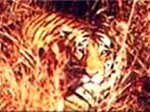 Kanha Kanha, 175 kms southeast of Jabalpur, is one of India’s largest national park and Asia's finest park. Kanha's sal and bamboo forests, rolling grasslands and meandering streams stretch over 940 sq km in dramatic natural splendour. This is original Kipling country, of which he wrote so vividly in his Jungle Book. The same abundance of wildlife species exists today in Kanha National Park, which forms the core of the Kanha Tiger Reserve created in 1974 under Project Tiger. The park is the only habitat of the rare hardground barasingha (Cervus Duvaceli Branderi). Kanha Kanha, 175 kms southeast of Jabalpur, is one of India’s largest national park and Asia's finest park. Kanha's sal and bamboo forests, rolling grasslands and meandering streams stretch over 940 sq km in dramatic natural splendour. This is original Kipling country, of which he wrote so vividly in his Jungle Book. The same abundance of wildlife species exists today in Kanha National Park, which forms the core of the Kanha Tiger Reserve created in 1974 under Project Tiger. The park is the only habitat of the rare hardground barasingha (Cervus Duvaceli Branderi).
By a special statute in 1955, Kanha National Park came into being. Since then, a series of stringent conservation programmes for the protection of the park's flora and fauna has given Kanha its deserved reputation for being one of the finest and best administered National Parks in Asia, an irresistible attraction for all wildlife lovers and a true haven for its animal and avian population.India’s one of the most successful conservation efforts of saving the Barasingha (Swamp Deer) was done here.
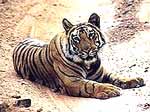 Bandhavgarh A wildlife retreat where history and nature meet, Bandhavgarh is set amidst the Vindhyan ranges, the park has a series of ridges running through it. This park was the former hunting preserve of the Maharaja of Rewa and at present is a famous natural hub for White Tigers. White Tigers, now a major attraction around the world's zoos, were first discovered in Rewa, not far from here. The terrain is broken, with rocky hill ranges, running roughly east west, interspersed with grassy swamps and forested valleys.
Much of the park is covered in Sal forest, replaced by mixed forests in the higher elevations of the hills. There are extensive stands of bamboo and grasslands. Generally the forests are less dense here, with less undergrowth than in North India, thus offering better sightings of wildlife, notably mammals, including the daylight sightings of Tigers in the grassy 'maidans'. 40 + Tigers are estimated for the park.
Other inhabitants of the park include the Muntajac, Jungle Cat, Ratel, Jyena, Porcupine, the Rhesus Macaque and the back-faced Langur. The park also has numerous ancient caves and rock shelters, with shrines and inscriptions. About 150 species of birds known from the Tala area are also found over here including the Brown Fish Owl, Grey-headed Fishing Eagle, Malabar Pied Hornbill and Shahin Falcon. Bandhavgarh A wildlife retreat where history and nature meet, Bandhavgarh is set amidst the Vindhyan ranges, the park has a series of ridges running through it. This park was the former hunting preserve of the Maharaja of Rewa and at present is a famous natural hub for White Tigers. White Tigers, now a major attraction around the world's zoos, were first discovered in Rewa, not far from here. The terrain is broken, with rocky hill ranges, running roughly east west, interspersed with grassy swamps and forested valleys.
Much of the park is covered in Sal forest, replaced by mixed forests in the higher elevations of the hills. There are extensive stands of bamboo and grasslands. Generally the forests are less dense here, with less undergrowth than in North India, thus offering better sightings of wildlife, notably mammals, including the daylight sightings of Tigers in the grassy 'maidans'. 40 + Tigers are estimated for the park.
Other inhabitants of the park include the Muntajac, Jungle Cat, Ratel, Jyena, Porcupine, the Rhesus Macaque and the back-faced Langur. The park also has numerous ancient caves and rock shelters, with shrines and inscriptions. About 150 species of birds known from the Tala area are also found over here including the Brown Fish Owl, Grey-headed Fishing Eagle, Malabar Pied Hornbill and Shahin Falcon.
|